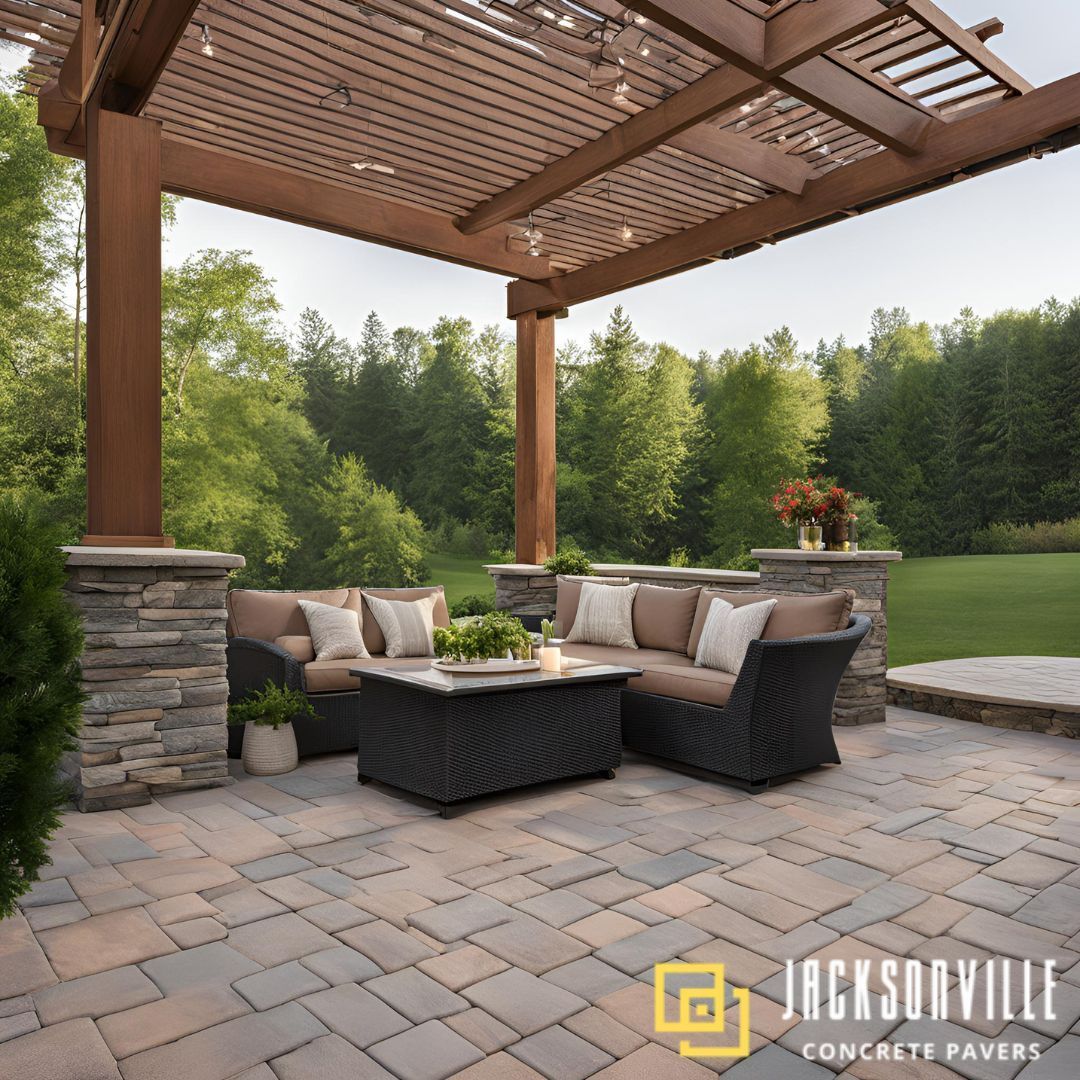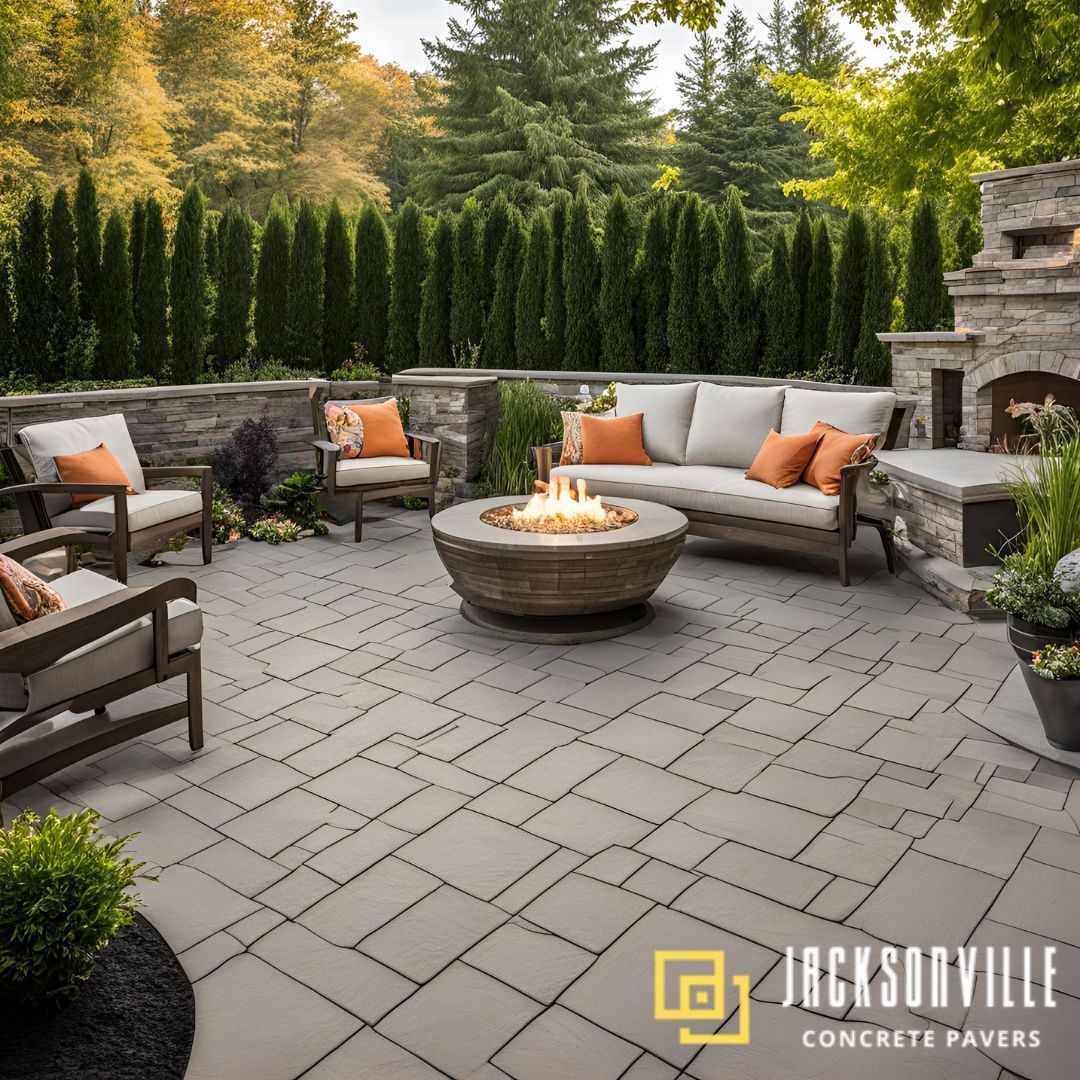Your Complete Guide to Choosing Pavers 12x12 for Outdoor Projects
Pavers 12x12 are a popular choice for outdoor spaces, thanks to their versatility and durability. They can accommodate a variety of designs, from simple and elegant to complex and intricate patterns. This size is ideal for a wide range of applications, including patios, walkways, and driveways, making them a go-to option for homeowners looking to enhance their outdoor living areas.
Moreover, these pavers are built to last. Constructed from high-quality materials such as concrete, brick, or natural stone, 12x12 pavers withstand harsh weather conditions, heavy foot traffic, and the test of time with minimal maintenance. Their durability ensures that your outdoor space not only looks fantastic upon completion but also maintains its beauty and integrity for years to come.
Ready to transform your outdoor area with the beauty and resilience of 12x12 pavers? Continue reading to explore design ideas, installation tips, and more to make your vision a reality.
Choosing the Right Installation Method for Your Pavers
Choosing the right way to put down your pavers is important to make sure your outdoor area looks great and lasts a long time. There are two main methods: dry-laid and wet-laid. Let's break them down into simpler terms.
Dry-Laid Pavers: A Flexible and Cost-Effective Option
Dry-laid installation means putting pavers on a bed of sand and gravel without using cement or mortar. This method is liked because it's straightforward and doesn't cost a lot. You just lay the pavers over the sand, and the weight of the pavers keeps everything in place. This approach is good because it lets water drain through, reducing puddles and slips. It's perfect for patios, walkways, and garden paths where you might want to change the design in the future since it's easy to lift and rearrange the pavers.
Benefits of Dry-Laid Installations:
- Less expensive and easier to do yourself.
- Good drainage, keeping the area dry.
- Easy to fix or change the design later.
Best Uses for Dry-Laid Pavers:
- Patios and walkways that might change in the future.
- Areas where water drainage is important.
- Projects where keeping costs down is a priority.
Wet-Laid Pavers: Durable and Permanent Solutions
Wet-laid installation involves using mortar or concrete to fix the pavers in place. This method creates a very stable and long-lasting surface that's great for driveways or areas that will see a lot of use. The pavers won't shift over time, and the surface is smooth and even. Preparing the area takes more work, and the process is generally more expensive because of the materials (like concrete) and the need for more precise work.
Advantages of Wet-Laid Installations:
- Very stable and durable; the pavers won't move around.
- Good for high-traffic areas like driveways.
- The finished look is smooth and professional.
Ideal Scenarios for Wet-Laid Pavers:
- Driveways and outdoor areas that need to handle a lot of weight.
- Spaces where you want a very polished, unchanging look.
- Places where you're okay with a higher upfront cost for less maintenance later.
Choosing between dry-laid and wet-laid depends on your project's needs, budget, and how you want the final area to look. Whether you prefer the flexibility and cost-effectiveness of dry-laid pavers or the durability and permanence of wet-laid pavers, there's a solution that's right for your outdoor space.
Material Matters: Selecting the Perfect Pavers for Your Project
When choosing the right pavers for your project, the material you pick is very important. Each type of paver material—concrete, brick, or stone—has its own benefits and looks. Here's a guide to help you decide which is perfect for you.
Concrete Pavers: Affordable and Versatile
Concrete pavers are a great choice because they don't cost too much and you can find them in many styles. They come in two different finishes:
- Smooth: These are sleek and modern, perfect for a clean, refined look.
- Textured: If you want something that feels more natural underfoot and has a grip, textured is the way to go.
Concrete pavers also offer a wide range of colors, from cool, elegant grays to warm, vibrant reds, letting you match any outdoor decor theme.
Brick Pavers: Timeless Appeal with Lasting Durability
Brick pavers give a classic look that doesn't go out of style. They're very strong and can handle a lot of wear and tear. When it comes to finishes, brick pavers can look:
- Antique: This finish gives a traditional look with lots of character.
- Weathered: For a softer, more worn-in feel, weathered bricks are perfect, adding a sense of history and elegance.
Brick colors usually include various shades of red, brown, and gray, making it easy to find the right one to fit your space.
Stone Pavers: The Natural Choice
For a truly natural and unique look, stone pavers are the top pick. They're cut from real stone, meaning no two pavers are exactly alike. The finishes include:
- Honed: This gives the stone a smooth, flat surface that's sleek to the touch.
- Tumbled: For a more rugged, natural look, tumbled stone pavers have softer edges and a textured surface.
Stone pavers come in a variety of types, like travertine paver, slate, and granite, each with its unique colors and patterns. Choosing stone pavers means bringing a piece of nature's beauty right into your outdoor space.
No matter which material you choose, the right pavers can turn your outdoor project into a beautiful, inviting space. Think about the look and feel you want to achieve, and pick the pavers that will best bring your vision to life.
Designing with Patterns: Bringing Your Outdoor Area to Life
Designing with patterns can turn your outdoor space into something special. Here's how using different patterns can bring your area to life:
- Basketweave: This pattern looks like the crisscross of a woven basket, giving a classic but modern feel. It's great for places like patios or paths because it has a neat, orderly look that catches the eye without being too busy.
- Herringbone: This pattern uses rectangular pavers arranged in a V shape. It's perfect for adding a sense of direction and making your space look longer or wider. Plus, it adds an interesting dimension, making any walkway or driveway pop.
- Running Bond: This simple pattern has pavers laid end to end in rows. It’s strong because the lines flow smoothly, which can make small spaces seem bigger. It’s easy to lay down and looks good almost anywhere, from your garden path to your driveway.
Using these patterns can help you make the most out of your outdoor areas, whether you're sprucing up a patio, walkway, or driveway. Each pattern has its charm and can complement your home's style while adding character and appeal to your outdoor space.
Application Ideas for 12x12 Pavers: Transforming Your Outdoor Spaces
12x12 pavers are perfect for making your outdoor spaces special. Let's explore how these pavers can bring life to patios, walkways, and driveways.
Paver Patios
Imagine your backyard turning into a cozy spot where you can relax, have BBQ parties, or just enjoy the sun. 12x12 pavers can make this happen. They fit together nicely to create a smooth area that looks good and feels great underfoot. You can choose from different colors to match your home or go with a pattern that makes your patio stand out. It’s like having a mini-vacation spot right outside your door.
Paver Walkways
Walkways made with 12x12 pavers guide friends and family to your home in style. These paths aren’t just about getting from point A to B; they're about adding a touch of charm to your yard. You can lay the pavers in lines or create fun patterns. Either way, they make your garden look organized and inviting. Plus, these pavers are tough, so they can handle lots of footsteps without getting damaged.
Paver Driveways
Your driveway is the first thing people see, so why not make it look great? 12x12 pavers are strong enough to handle cars driving over them every day and still look as good as new. You can stick with a classic look or get creative with colors and designs. A paver driveway not only adds beauty to your home but can also increase its value. It’s a smart choice that combines style with function.
Using 12x12 pavers for your patios, walkways, and driveways can truly transform your outdoor areas into beautiful, functional spaces. Whether you’re looking for a place to unwind, a pretty path through your garden, or a sturdy, stylish driveway, these pavers have got you covered.
Suggested Reading: Transform Your Outdoor Living Space with These 2024 Paver Patio Designs
Enhancing Your Space with Paver Edging and Borders
Adding edging and borders to your paver project can really make your outdoor space pop. Think of edging as the frame for your beautiful paver picture. It not only looks good but also does a lot of helpful things. First off, natural stone border edging keeps your pavers in place. Without it, your pavers might shift or spread out over time, especially in areas that get a lot of rain or foot traffic.
Borders do more than just keep things tidy. They let you play with colors and patterns, giving your space a unique look. You can match your border to your pavers for a seamless look or choose a contrasting color to make it stand out. This small detail can make a big difference in how your driveway, patio, or walkway looks and feels.
Besides looking nice, edging and borders help your paver areas last longer. They stop soil from spilling onto your pavers, which can make them dirty or even damage them over time. Plus, they help water drain away from your paver surface, reducing the risk of slipping or the pavers getting worn out by too much water.
In short, adding edging and borders to your paver project is a smart move. It's like putting the finishing touches on a painting. This simple step can turn a nice-looking outdoor area into something truly special, both in how it looks and how well it works.
Maintenance and Care: Keeping Your Pavers Pristine
Keeping your pavers looking great isn't hard if you follow some simple steps. Here's how you can take care of them:
- Clean Regularly: Just like sweeping your floors inside, cleaning your pavers often helps them stay nice. Use a broom to sweep away leaves, dirt, and anything else that lands on them. If you see a stain, like from a spilled drink or oil, clean it up quickly with soap and water.
- Wash with Water: Every now and then, give your pavers a good wash with water. A garden hose will do the trick. This washes away any dirt or dust that's stuck on them. If they're very dirty, you might want to use a gentle soap or a special cleaner made for pavers.
- Seal the Pavers: Think of sealing like putting on a coat to protect against the rain. Sealing your pavers helps protect them from stains, sun fading, and wear and tear. It's like giving them a shield. You don't have to do this all the time—once every two or three years should be enough.
- Handle Weeds and Moss: Sometimes, weeds or moss might grow between your pavers. Pull these out when you see them. You can also use a safe weed killer if needed, but be careful not to damage the pavers.
- Fix Loose Pavers: Now and then, a paver might get loose. If that happens, just take it out, fix the base (the ground beneath it), and put it back. This keeps your walkway or patio safe to walk on and looking good.
By doing these things, your pavers will keep looking beautiful for a long time, making your outdoor space a place you love to be.
Suggested Reading: Choosing the Right Pavers Sealer for Your Home: The Ultimate Guide
Why Choose 12x12 Concrete Pavers for Your Next Outdoor Project
Choosing 12x12 pavers for your next outdoor project is a smart decision for several good reasons. First off, these pavers are really easy to work with. Whether you're looking to create a cozy patio, a welcoming walkway, or a durable driveway, 12x12 pavers fit together nicely and don't require a lot of complicated tools or techniques to install. This means you can get your project done faster and enjoy your new space sooner.
Another big plus is the variety of looks you can achieve with 12x12 pavers. They come in a bunch of different colors and materials, like concrete, brick, and stone. So, whether you want something modern and sleek or more traditional and rustic, you can find the perfect pavers to match your style. Plus, their size makes them super versatile for designing patterns that make your outdoor area stand out.
Most importantly, 12x12 pavers are tough. They can handle all kinds of weather, from blazing sun to freezing cold, without cracking or fading. That means your outdoor space will look great not just now, but for many years to come, with very little upkeep needed.
Thinking about giving your outdoor space a makeover? 12x12 pavers could be the perfect choice for bringing your vision to life. For expert advice and top-quality products, reach out to Jacksonville Concrete Pavers. We're here to help you every step of the way, from choosing the right pavers to completing your project with confidence.
FAQs: Everything You Need to Know About 12x12 Pavers
How many pavers do I need for a 12x12 patio?
To cover a 12x12 foot patio, you would need 144 pavers if you're using 12x12 inch pavers. This calculation assumes each paver is exactly one square foot, and the total area of your patio is 144 square feet (12 feet by 12 feet). Remember to buy a few extra pavers to account for cutting and fitting, especially around the edges or for any mistakes.
What is the best base for pavers in Florida?
In Florida, the best base for pavers is a combination of crushed stone and concrete sand. Begin with a layer of crushed stone (also known as aggregate or base material), about 4 to 6 inches deep, compacted well. Over this, add a 1-inch layer of concrete sand to set your pavers on. This combination ensures good drainage and stability, critical in Florida's often wet and unstable ground conditions.
How thick is a 12x12 paver?
A standard 12x12-inch paver is typically about 1.5 to 2.5 inches thick. The exact thickness can vary based on the material (concrete, brick, or stone) and the intended use (pedestrian vs. vehicular traffic). Thicker pavers are generally used for areas that will support vehicles, while thinner ones are suitable for foot traffic, like patios or walkways.
How much is 500 square feet of pavers?
The cost of 500 square feet of pavers can vary depending on the material, quality, and where you're purchasing them from. On average, you can expect to pay between $3 to $6 per square foot for the pavers themselves, which would total between $1,500 to $3,000. Remember, this doesn't include the cost of additional materials (like base materials and sand) or installation labor, which can significantly increase the total project cost.
Can 12x12 pavers be used for a driveway?
Yes, 12x12 pavers can be used for a driveway, but it's important to choose the right type of paver that can withstand the weight and movement of vehicles. Opt for pavers that are at least 2.5 inches thick and made of durable materials like concrete or stone. Proper installation with a suitable base and edging is also crucial for a driveway to ensure the pavers remain stable and don't shift over time.




